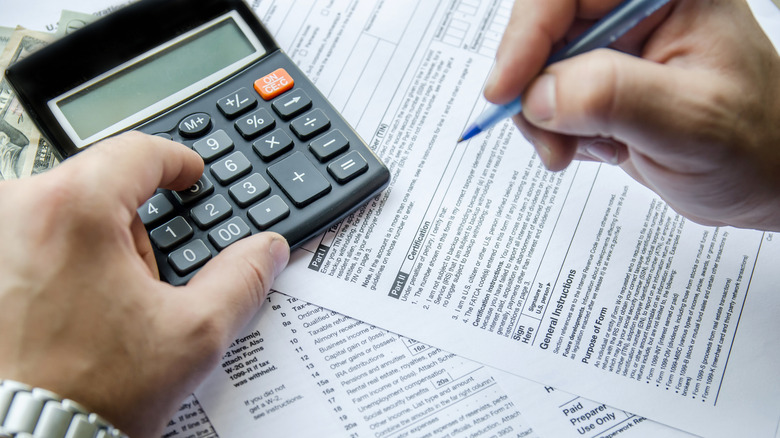The Underrated Savings Account You Should Open To Save Money On Income Taxes
Saving on income tax means you can cut down on healthcare costs. Especially if you use a Flexible Spending Account (FSA) available to you at your workplace and sponsored by your employer. This type of account allows you to set aside money from your paycheck before taxes are applied, for eligible health expenses such as health care or dependent care costs. You sign up when your employer lets you pick benefits, or when you first qualify for them and choose how much money to put into it every year. There's a cap; $3,300 for healthcare FSAs and $5,000 for costs like dependent care FSAs in 2025.
After you sign up, this money gets taken out of your paycheck before the government takes its share for taxes. For instance, if you make $50,000 a year and put $2,000 into an FSA, you're only taxed as if you make $48,000, not including other deductions. The big perk is that every dollar you put in avoids federal income tax, Social Security tax, and state and local taxes. Money you can divert to doctor's visit fees, medicine, or child and elderly care expenses. This method of saving money on income taxes is a welcome remedy when you consider what happens when you don't pay your medical bills.
What you should know about Flexible Spending Accounts
Flexible Spending Accounts have a "use-it-or-lose-it" policy — if employees don't use the funds within the deadline, usually December 31st, the money returns to the employer. Some employers give a 2.5 month extension. Others might let you carry over a certain amount to the next year, giving you time to use the money you set aside. The IRS set the maximum carryover amount at $660 for 2025.
FSAs are linked to your job; so when you leave, the funds don't follow you. This is why you should not wait to use the money. On Healthcare FSAs — medical, dental, and vision expenses — the full amount you choose for the year is available on day one, even if only a small portion has been taken out of your paycheck so far. Say you decide to put $3,000 into your FSA for the year, that entire $3,000 is ready to use right away, whether it's January or June, even if you've only contributed a fraction of it.
It works differently for Dependent Care FSAs; including childcare and elder care expenses. Instead of getting the full amount upfront, you can only spend what has already been taken from your paycheck. The money builds up over time, meaning if you set aside $3,000 for the year, you won't have access to all of it in January — you'll use it as it gets deducted throughout the year.
Know all that FSAs cover
To get the most out of your Flexible Spending Account (FSA), go beyond the basics. Sure, you know it covers prescriptions and doctor visits, but you can also use it for acupuncture, breast pumps, or a portable air purifier if you have asthma. Some plans even cover guide dog expenses. So review last year's medical costs and think ahead. If you spent $400 on allergy meds, you might need a similar amount this year. Factor in things like new glasses, braces, or even fertility treatments. To learn more about what qualifies, use the FSA Store's eligibility list or IRS Publication 502.
Be precise when you decide how much goes into your FSA. Set aside too little, you miss out on tax savings. Put in too much, you risk losing unspent money. Look ahead. If you have surgery coming up, factor in the deductible, anesthesia, and any supplies you'll need afterward. Life changes — a new diagnosis or pregnancy — can shift your medical costs, so check if your employer allows mid-year adjustments.
It also helps to get a second opinion. A tax professional can point out savings you might overlook, like using FSA funds for a spouse's medical bills, even if they have a different insurance plan. The key is to match your contributions to your actual needs. You get it right, and your routine health costs become an easy way to lower your tax bill every year.


